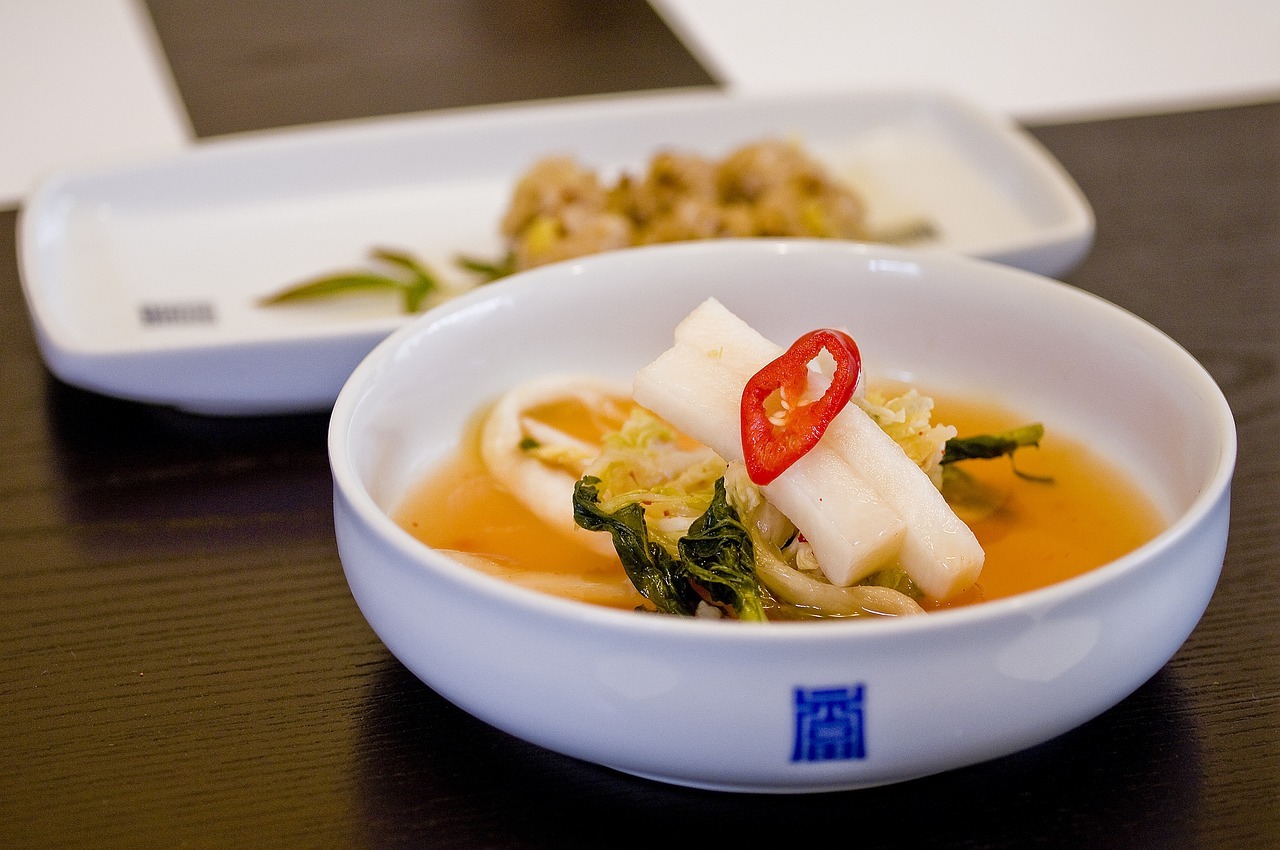Korean Fusion cuisine has a long history that dates back to the beginning of Korean culture.
Interactions between different peoples and cultures has always led to new ways to prepare foods, new ingredients to use, new methods of preparation, and new utensils, cooking vessels, and equipment.
The original Korean peoples were hunter/gatherers who, over time, learned to farm and raise food animals. Tribes became villages, villages became city states, and city states became kingdoms. As these entities merged, their cuisines merged also.
When trade with other regions began, new foods and ideas were introduced. Crops and food animals from western Asia and the Middle East filtered through China and into Korea. Eventually trade from the New World filtered through China and Japan with a profound effect on Korean cuisine-the whole hearted adoption of the chili pepper.
Today, the cumulative fusions from the past are considered traditional, but contemporary Korean cuisine continues to evolve. Koreans who have emigrated to other countries adapt their cooking methods to incorporate locally available ingredients, or adopt local dishes and change them to include Korean favorites. Some of the Korean émigrés return to Korea, bringing these new food concepts back with them, contributing to the food evolution. More contributions come from Korean Chefs who train in other countries and from Fast Food giants opening franchises in Korea.
Outside Korea, second and third generation immigrant families have combined a taste for traditional Korean fare with the cuisine of the host country, and mixed cultural families (Koreans who have married or been adopted into non-Korean families) work out their own meld of cuisines. Some Korean restaurants in other countries add to the fusion by creating dishes to attract non Korean customers.
Traditional Korean fare is great, sweet and smoky meats from the grill, royal dishes, hearty soups and stews, stir fried fresh and preserved vegetables, fermented pastes and sauces, and a huge variety of fresh and dried seafood combine to make a very interesting and flavorful cuisine.
Adapting the flavors and techniques into new offerings is also a time tested tradition, so use these recipes as a starting point for your own creations.
